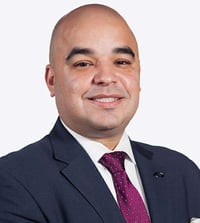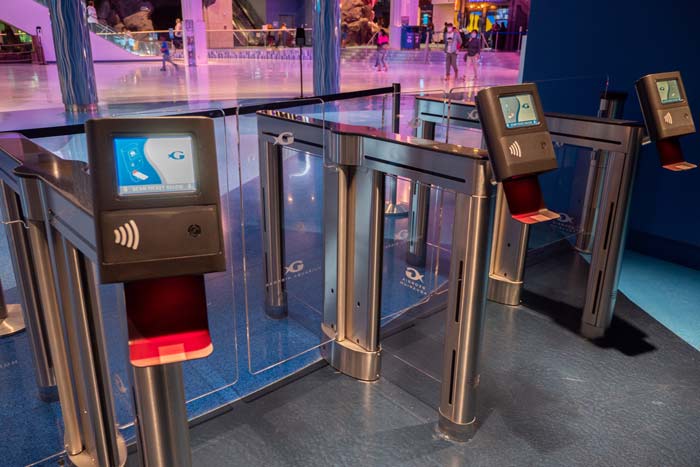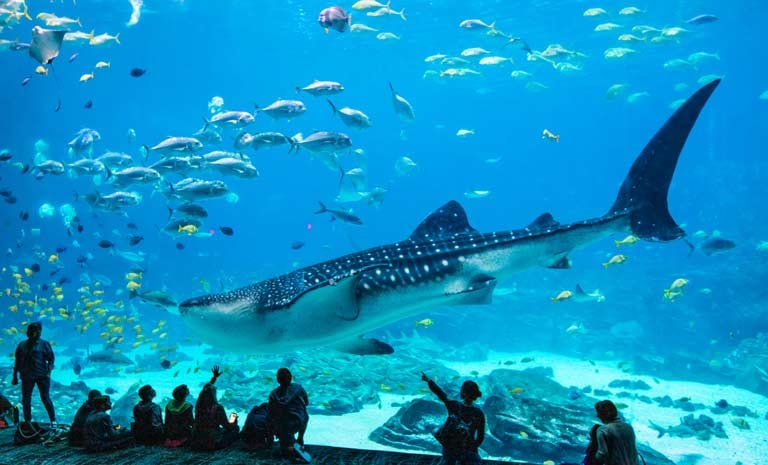Arts and Culture
Business Strategy
COVID-19
Technology
Ticketing and Admissions
Article
Success Stories
383fbc19-cebb-446d-a664-486c4c55ce0d
7 min
https://edge.sitecorecloud.io/tessituraneab9a-tessiturane5642-staging-5396/media/Images/Licensee-Photography/Photos_768x465/GAQ-Ocean-Voyager-cr-Georgia-Aquarium-768x465.jpg?h=465&iar=0&w=768
How Georgia Aquarium creates a visitor-focused experience
A contactless customer journey with a personal touch

Director of Marketing & Communications, Tessitura Network
A contactless customer journey with a personal touch
7 min
“I like to push the technology aspect of what we do,”
says Anthony Rivera, Vice President of Operations and Hospitality at Georgia Aquarium (pictured below at right).
 “I think that’s what helped us navigate successfully through the pandemic,” he adds. The Aquarium already had a sophisticated online purchase path for timed ticketing, as well as several kiosks that allowed visitors to buy tickets without face-to-face contact. Because of that, he says, “we didn’t have to re-think our whole ticketing process.”
“I think that’s what helped us navigate successfully through the pandemic,” he adds. The Aquarium already had a sophisticated online purchase path for timed ticketing, as well as several kiosks that allowed visitors to buy tickets without face-to-face contact. Because of that, he says, “we didn’t have to re-think our whole ticketing process.”
“While everyone was figuring out, ‘How do we do timed ticketing?’, we were ready. And we were able to invest our time and energies into more safety protocols.”
“While everyone was figuring out, ‘How do we do timed ticketing?’, we were ready. And we were able to invest our time and energies into more safety protocols.”
Ticket kiosks
“The kiosk has been an important element in the journey for the guest,” Anthony says. “About 30 to 40% of guests who purchase walk-up tickets prefer to use a kiosk as opposed to going to a window.”
To implement their current kiosk setup the Aquarium partnered with Tessitura and KIS. “We’ve been lucky to partner with Tessitura and KIS to make our kiosks user-friendly and fit our aesthetic,” Anthony says. Georgia Aquarium has six kiosks outside their building. They worked with KIS not only on the hardware but also to shape the on-screen customer journey.
Once the visitor selects a day to visit, the kiosk presents additional options. “You can go for a behind-the-scenes tour, you can do an animal encounter,” Anthony says. With all those options, “helping to lay that out in a way that people can understand is critically important.”
“We’ve been lucky to partner with Tessitura and KIS to make our kiosks user-friendly and fit our aesthetic.”

Kiosks at Georgia Aquarium.
Anthony notes that visitors appreciate the low-pressure feel: on-screen, these offers feel more like opportunities than upsells. And for guests who decline these options, clicking past is easier than saying “no” to a person’s face. Guests also like being able to review their cart visually before confirming their purchase.
Perhaps because of this psychological comfort, Anthony notes that Georgia Aquarium sees higher per-capita spend at the kiosks than in window transactions. “That means sales are higher for us. But this also hopefully means that people are getting what they want. The Aquarium is a 501(c)3 not-for-profit organization. Every dollar spent goes to into our operations, which fuels our animal care, exhibits, and even our global research initiatives.”
Georgia Aquarium sees higher per-capita spend at the kiosks than in window transactions.
Creating efficiencies
“Our kiosks have been successful in the fact that people want to use them,” Anthony observes. “People would prefer to go to our kiosk lines. And we find that our lines are shorter at the kiosk than at the general window.”
“It cuts down how many staff members we need out there, but also decreases the wait time for people.” Plus, he notes kiosks are always available. “Before we even open, a kiosk can sell you a ticket. When we close, a kiosk can sell you a ticket.”
Another benefit is that the kiosks allow the Aquarium to open fewer ticket windows. “That allows me to deploy staff to assist guests, answer questions, help them navigate the building,” Anthony says. In other words, it allows a stronger focus on visitor services.

Photo courtesy of Georgia Aquarium.
“You can’t measure personal interaction,” Anthony says. “The investment in the human capital at that point is priceless.” As a visitor, “You now have someone that’s talking to you: not trying to upsell you into anything, just trying to make sure you are taken care of.”
“It’s a different scenario and people feel that,” Anthony says. “That’s what creates an experience as opposed to a transaction.”
“That’s what creates an experience as opposed to a transaction.”
A contactless customer journey
“The whole journey is supposed to be contactless, as much as possible,” Anthony says. “Once guests have purchased their ticket, they make their way to our entry. They go through a security process, which is contactless, and a photo opportunity. What’s new is our turnstiles. Individuals walk up to the turnstile with their ticket in hand, and they scan it themselves. The gate opens up and allows them entry into the Aquarium.”

Scanners and turnstiles at the entrance to Georgia Aquarium. Photo courtesy of Georgia Aquarium.
The turnstiles are the “newest portion of our guest journey,” Anthony notes. “Turnstiles are something that Tessitura and our turnstile provider, Alvarado, worked with us to connect seamlessly.”
As with the kiosks, the turnstiles “have allowed us to deploy staff to other locations to be able to enhance the guest experience,” Anthony says. “At the end of the day, what we’re trying to do is create a natural flow into the building itself, as seamless as it possibly can be.”
Happier visitors
“Our volume at the Aquarium over the last five years has consistently grown,” aside from the dip related to the pandemic. “Along with that, our guest reviews and feedback have been positive.”
That’s an unusual combination: “In a normal scenario, when your volume increases, your service ratings decrease,” Anthony explains. “We’ve seen an opposite trend, where we see our scores increase with the number of people that participate, that give us feedback when they come to the Aquarium.”
Most importantly, he notes: “That’s a direct result of us being able to allocate more people to guest services as opposed to transactions.”
A culture of pushing the envelope
Bold innovation is part of the institutional culture of Georgia Aquarium. For example, Anthony says: “We opened our newest gallery in 2020; Sharks! Predators of the Deep. This is a one-of-a-kind, one-million-gallon shark exhibit that features hammerheads, tiger sharks, and sand tiger sharks and we’re the only aquarium to have these species in one exhibit of this size. The gallery’s mission is to educate our guests on the misconceptions about sharks and invoke a renewed sense of respect. We’ve never shied away from doing things that are difficult or challenging how people think about animals and our ocean. It’s part of who we are.”

Ocean Voyager exhibit. Photo courtesy of Georgia Aquarium.
“Our animals and the expert level of care they receive is what we’re known for and that’s why guests keep coming back,” he continues, “you then push yourself on all aspects, including how you deliver it to the public, to meet that expectation.”
One aspect of that is aligning with the right partners to continually advance technology at the Aquarium. “That’s the key element for us: can we partner with someone who’s thinking about tomorrow?”
“It’s our culture to consistently test the boundaries and find out how do we do it better,” Anthony continues. “Having partners that can help support that is critically important.”
“It’s our culture to consistently test the boundaries and find out how do we do it better. Having partners that can help support that is critically important.”
Looking forward
As the Aquarium welcomes visitors in 2021, Georgia Aquarium is showing a new path forward: a safe, contactless guest experience that is also welcoming and focused on customer service. And they’ve created it in partnership with Tessitura, integrating contactless security and turnstiles as well as Tessitura’s trusted partner KIS kiosks.
It’s essential “that we have a partner on board that’s willing to challenge the status quo.” Anthony says. “And that’s what we’ve seen.”
Top photo: Ocean Voyager at Georgia Aquarium. Photo courtesy of Georgia Aquarium.
Topics
Arts & Culture
/Business Strategy
/COVID-19
/Technology
/Ticketing & Admissions

Five stories of success we heard at TLCC
Arts & Culture / COVID-19 / Community Engagement / Digital / Memberships / Ticketing & Admissions / Virtual Experiences
Institutions from London to Belfast to Dallas have strengthened engagement in many inventive ways

Why Arts & Culture is Essential Today
Arts & Culture
Healing the world requires five human traits: arts & culture delivers them all.

A contactless customer journey with a personal touch
Arts & Culture / Business Strategy / COVID-19 / Technology / Ticketing & Admissions
How Georgia Aquarium creates a visitor-focused experience
